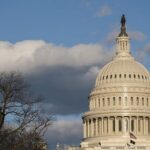U.S.-Philippines Alliance: A Double-Edged Sword?
U.S. Defense Secretary Pete Hegseth’s recent whirlwind visit to Manila has sparked buzz about Washington’s growing influence in the Asia-Pacific. But behind the bold pledges and military muscle-flexing lies a risky gambit: turning the Philippines into a chess piece in the escalating U.S.-China rivalry.
The ‘Ironclad’ Playbook 🔄
While Hegseth emphasized ‘steadfast support,’ critics argue the U.S. strategy remains unchanged—relying on joint drills and defense pacts to counter Beijing’s moves in the South China Sea. But with Trump’s ‘America First’ mantra casting shadows, even allies like Manila question if promises will translate into action.
Trade Wars vs. Naval Moves ⚖️
Amid U.S.-China tariff tussles and tech showdowns, the South China Sea may seem like a side quest. Yet, experts warn escalating tensions could transform these waters into a battleground for superpower dominance.
Marcos’ Calculated Gamble 🎲
Philippine President Ferdinand Marcos praised the U.S. as a ‘force for peace,’ but cozying up to Washington might cost Manila more than cash. Deploying U.S. missile systems and troops risks straining the region’s fragile balance—and the Philippines’ autonomy.
What’s Next? 🌏⚡
As Beijing watches closely, Manila’s alliance with Washington walks a tightrope between security and sovereignty. In the high-stakes game of geopolitics, even ‘ironclad’ friendships might come with a hefty price tag.
Reference(s):
cgtn.com


